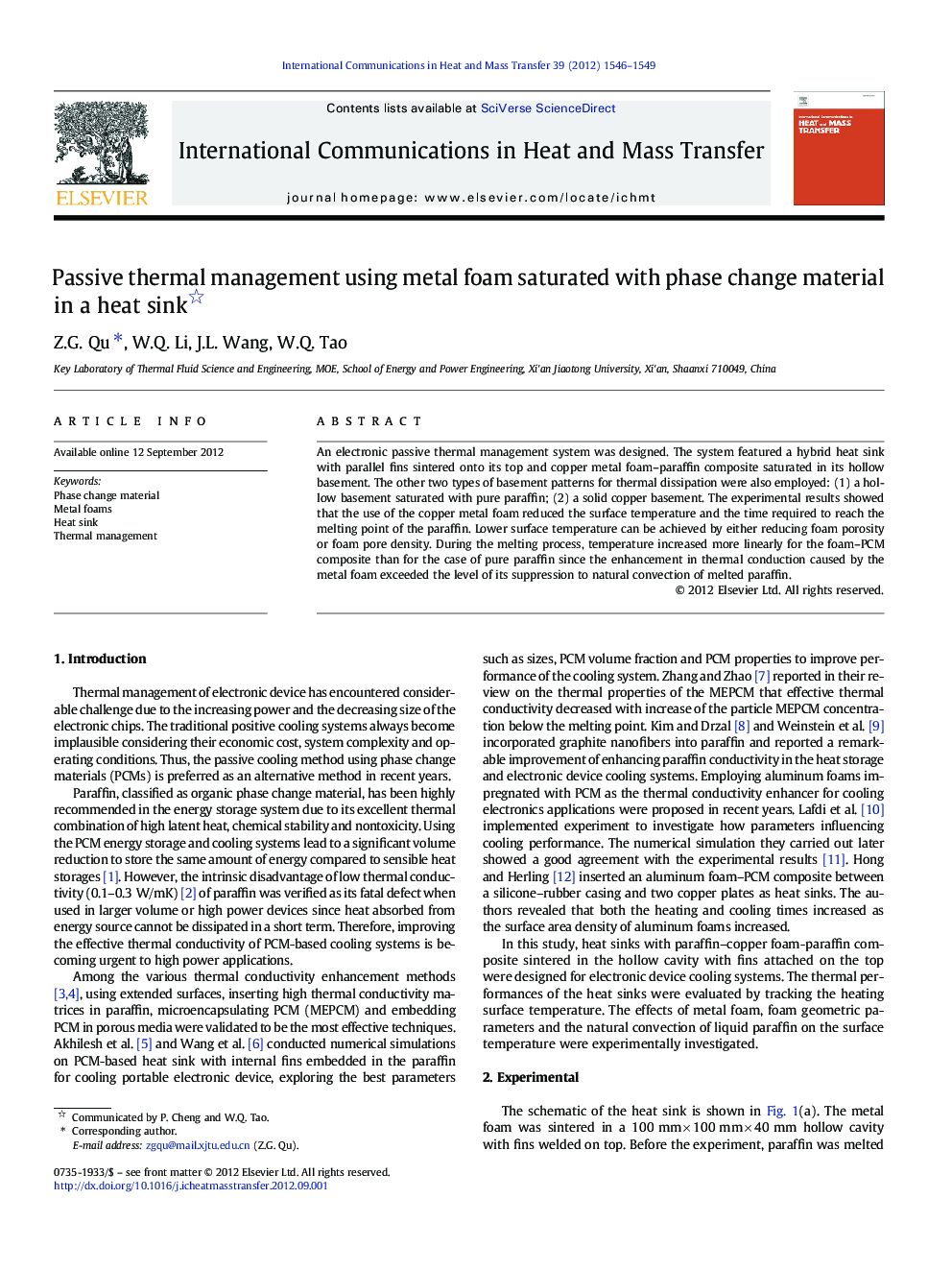| Article ID | Journal | Published Year | Pages | File Type |
|---|---|---|---|---|
| 653592 | International Communications in Heat and Mass Transfer | 2012 | 4 Pages |
An electronic passive thermal management system was designed. The system featured a hybrid heat sink with parallel fins sintered onto its top and copper metal foam–paraffin composite saturated in its hollow basement. The other two types of basement patterns for thermal dissipation were also employed: (1) a hollow basement saturated with pure paraffin; (2) a solid copper basement. The experimental results showed that the use of the copper metal foam reduced the surface temperature and the time required to reach the melting point of the paraffin. Lower surface temperature can be achieved by either reducing foam porosity or foam pore density. During the melting process, temperature increased more linearly for the foam–PCM composite than for the case of pure paraffin since the enhancement in thermal conduction caused by the metal foam exceeded the level of its suppression to natural convection of melted paraffin.
